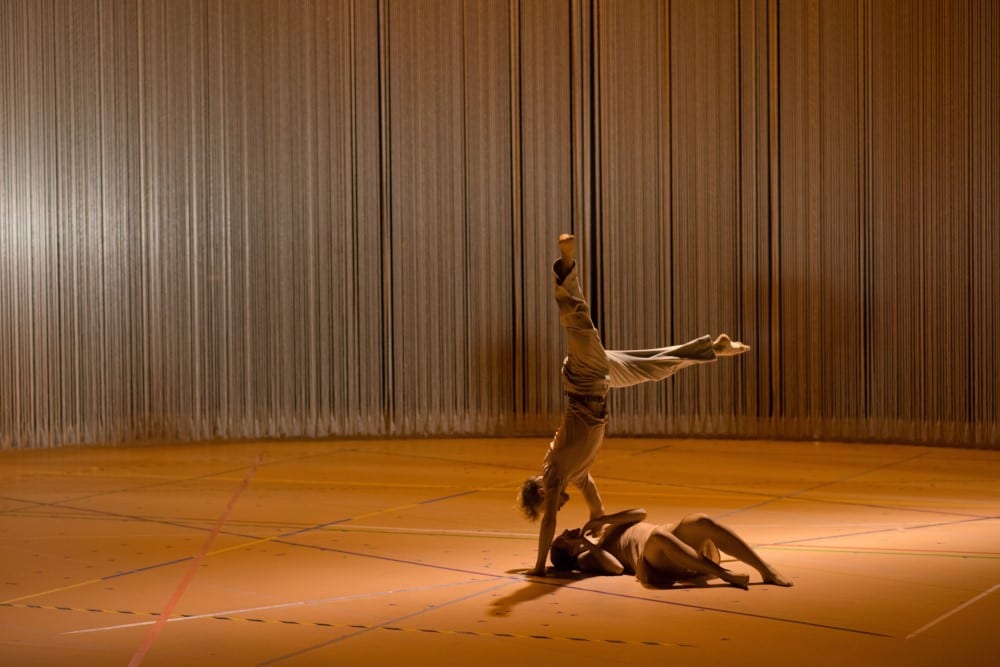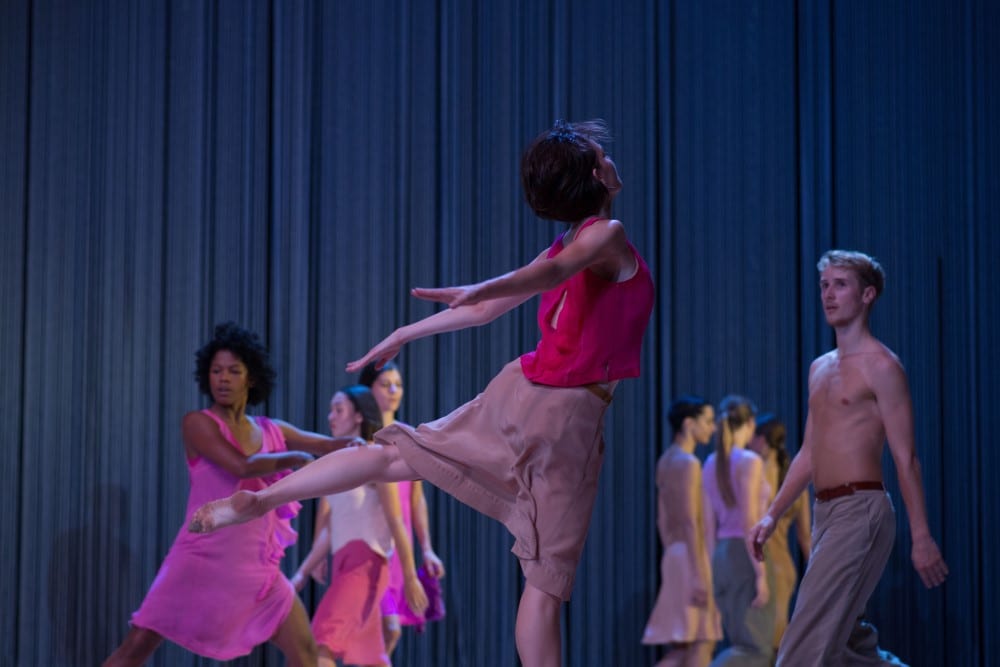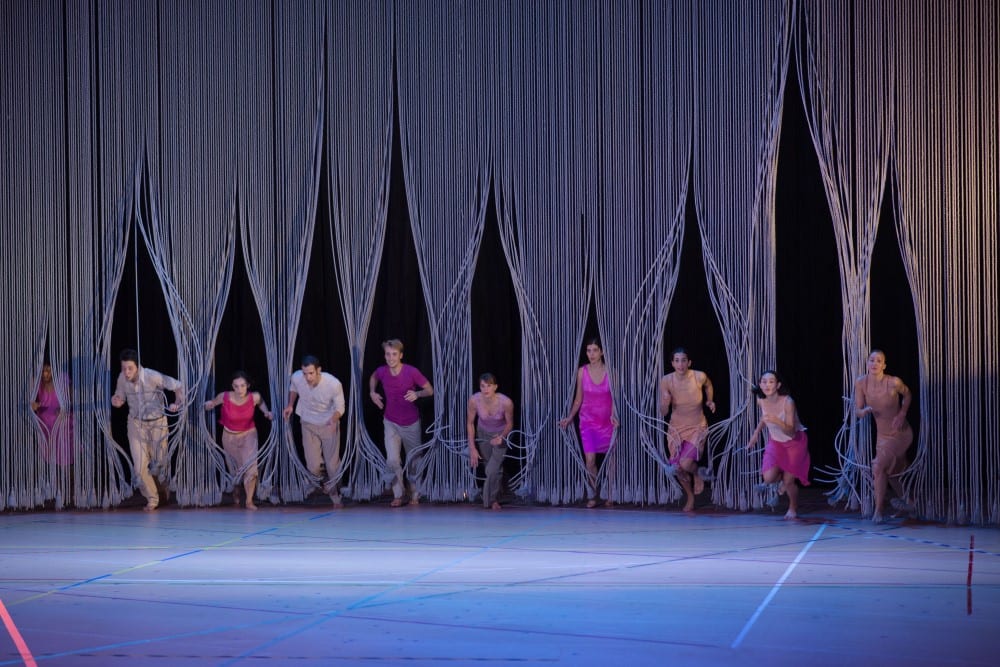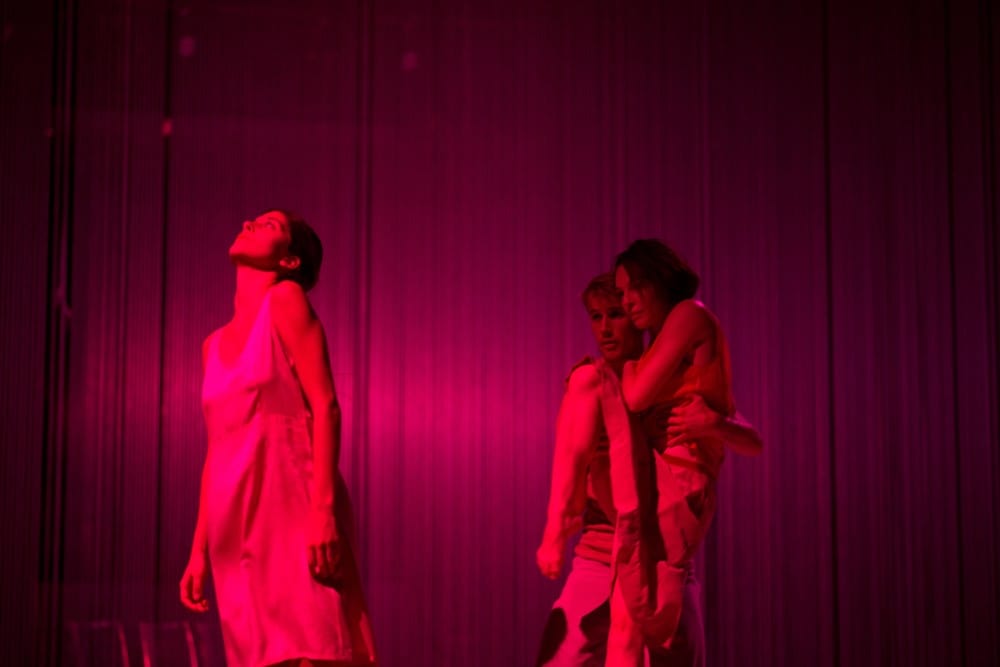Rain is seventy minutes of magnificent music made manifest. Performed by ten of the finest dancers who comprise Anne Teresa de Keersmaeker’s company Rosas, it is set to Steve Reich’s Music for 18 Musicians (which won a Grammy award in 1999). This extraordinary work of 1976 includes four grand pianos and four huge marimbas and xylophones squeezed into Sadler’s Wells orchestra pit with four singers, not to mention clarinets and strings. It is here performed thrillingly by de Keersmaeker’s usual orchestral companions, Ictus. The result is simultaneously exhilarating and relaxing, like a cool swim on a very hot day. Her choreography, with its trademark elegance, is as complex and precise as each scored note or pause.
De Keersmaeker has always been as involved with sound as she is with movement, whether it be medieval acapella chants, Bach, or Steve Reich. Her focus is on precision, on numerics, on the complex patterns that infuse great music and thus her dance. Famous for her detailed geometries, she says of Rain that her aim is for the audience “to be swept away without necessarily understanding the construction”.
Her reputation’s swift rise in the mid-1980s began immediately with what was to remain her characteristic exploration of minimalism, of the minuscule, of finely wrought, meticulous departures from stillness and silence. Despite her trademark style of fine adjustments made to repetitions of movements, Rain is anything but repetitious. It is a rush of complex alterations, at any one moment each dancer moving swiftly and differently from the next, all always in harmony – or deliberately not.
Historically, it seems to me that Anne Teresa de Keersmaeker’s work is an assault on the premise of her immediate and great antecedent, also notorious for his minimalist abstractions: Merce Cunningham. She certainly wasn’t about to pick up his baton. From the start of Cunningham’s career, he and his long-term musical partner, John Cage, decided that their two artistic forms should be independent of each other in performance. It was not unknown for Cunningham’s dancers to rehearse for weeks in silence, performing with the music only at the eleventh hour. In sharp contrast, next generation de Keersmaeker upholds an opposite assumption. Indeed, some of her early works devised the music and movement simultaneously.
Despite everyone’s stabs at explaining the title, including the choreographer, it has got nothing to do with rain, unless you consider that for someone in a desert, rain is what you most long for, and here we are given that. I am reminded of being at a party one night and seeing a girl of about seven standing alone in the middle of the patio, in the rain. “I think she should come inside,” I remarked to a nearby adult, who responded: “She’s just come from Saudi Arabia. She’s never seen rain before.” That child’s feelings perhaps share a little with those experienced by an audience rapt by Rosas’ Rain.





